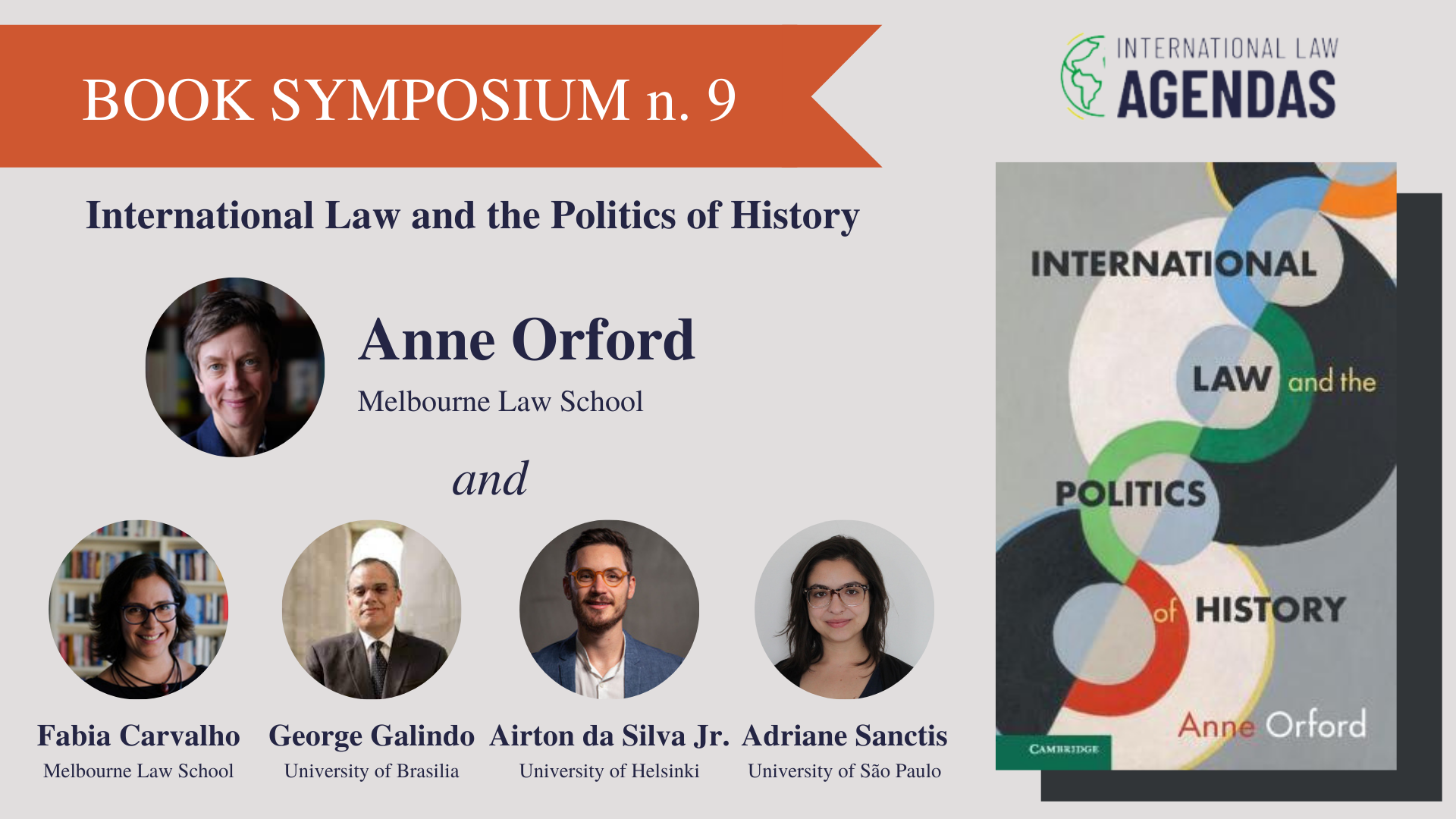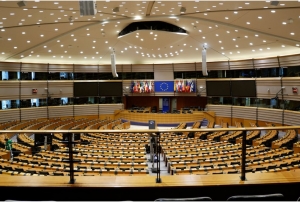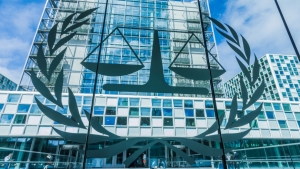I am grateful to Lucas Lixinski for organising this symposium and to the Brazilian colleagues who have written thoughtful and engaged responses to International Law and the Politics of History. As the contributions to this symposium make clear, Brazil is home to a dynamic community of scholars reflecting on what international law can and might mean for the region and the world. Rethinking the history of international law has been central to that project.
As Fabia Fernandes Carvalho points out, the book arises out of an encounter that has taken place between international law and history in recent decades. George Galindo rightly comments that what has been claimed as a ‘turn to history’ in international law was in many ways a continuation of international law’s much longer engagement with the past, a point I make in Chapter 2 where I seek to situate that ‘turn’ and in Chapter 5 where I explore the many ways that international legal arguments make use of the past. Nonetheless, the familiar claim that international law took a ‘turn to history’ refers to a renewed engagement with history in international legal scholarship that began in the 1990s.
Much of the initial scholarly work undertaken during that period by international lawyers was motivated by what historians describe as ‘presentist’ concerns – that is, the desire to turn to the past as a way of understanding or critiquing the role of international law in a rapidly changing global situation. While some of the international lawyers undertaking such work saw themselves as undertaking historical projects, most did not. As I explore in Chapter 3, the sense of a ‘turn’ to history also resulted in part from the accompanying turn to the international by historians, and the lively and enriching exchanges, debates, and interactions between the two academic fields of international law and history that resulted. Yet as debates over the history of international law became more visible, institutionalised, and contested, a growing number of historians of international law began to challenge the accounts of the past offered by international lawyers on methodological grounds.
As Carvalho suggests, the book seeks to question the resulting scholarship that admonished international lawyers for ignoring or questioning rules of historical methodology, and to explore what lies behind the sense of the dangers posed by styles of legal argument that do not comply with empiricist historical methods. More broadly, it seeks to grasp the political stakes of claims made about the capacity of historicization to produce accounts of the past that are above the battle for the meaning of legal texts or legal concepts or law itself in the present.
Importantly, while stories about interdisciplinary encounters or critical scholarship are often organised around narratives of failure, the story I tell in the book is one of success. It is a story about what happens when a new approach to the study of a field begins to become central, dominant, and mainstream. Where once innovation was the name of the game, as the new approach begins to be taken seriously, its proponents seek to appear more professional, rules of historical methodology begin to be defined, and nonconformity begins to be criticized as unscientific or partisan.
The book stands back from the resulting debate to examine more broadly how it was structured. It attempts to make sense of the traditions that informed it, the narratives that shaped it, and the stock figures that peopled it, in order to develop a more reflective understanding of the politics involved in making meaning through engaging with the legal past. As Carvalho recognises, the goal of this reflection was not to impose a new set of rules on international lawyers (let alone on historians), but rather to think more carefully about why the methodological encounter between history and international law was proving confining and unproductive. The problem, as she points out, arises when truth-claims serve to close off productive and diverse avenues for creative and critical work.
Yet as Carvalho also stresses, the commitment to experimentalism, openness, and pluralism in legal scholarship that informs the book does not mean that ‘anything goes’. Rather, the book concludes that all those who purport to interpret the past and present of international law need to take responsibility for the many choices we make, for example when we choose which questions to ask, which stories to tell, which issues or figures to place in the foreground and which in the background, and which material to assemble into our historical narratives and legal arguments.
Airton Ribeiro da Silva Jr and George Galindo focus on the way that the book provokes the reader to think about and question the relations between international law and history, and between international law and its own past. For Silva, the book unsettles the disciplinary boundaries between the two fields through exploring the intersections between them. However, both Silva and Galindo question the focus on the contextualist methodology of the Cambridge School, given that it is just one of the historical approaches that might be adopted in engaging with the history of international law.
Before responding to the question of why I focus in Chapter 4 on the Cambridge School, I would note that I was careful throughout the book to stress that there are lively debates over methods and approaches within the discipline of history. Although international lawyers have been urged to comply with historical ‘best practices’ or ‘basic rules of historical methodology’, the idea that there is a set of empiricist rules that should govern historiography has long been challenged within the discipline of history, as well as by art historians, postcolonial theorists, literary theorists, and queer theorists. Indeed, as I point out in Chapter 3, while lawyers were being berated for questioning or failing to conform to empiricist historical protocols, a number of historians were writing influential manifestos expressing concern about how the demand for conformity with specific empiricist conventions was being deployed within the field of history.
The key point to note, however, is that little, if any, of that scholarship registered in debates about historiography in international law. As is often the case with the field of law, and perhaps with interdisciplinary work more generally, it was not the methods of critical or heterodox scholars that were introduced as historical standards, best practices, or rules of engagement. Overall, as the turn to history in international law intensified, the legitimacy of empiricist historical rules was increasingly treated as given and the desirability of applying those rules to international law treated as self-evident. Most of the scholarly work admonishing international lawyers for ignoring or questioning rules of historical methodology simply asserted the timelessness of those rules and the normative desirability of following them without further explanation.
In contrast, in the book I set out to explore what lay behind the sense of the dangers posed by styles of legal argument that do not comply with empiricist historical methods. In order to do so, I turned to the work of a group of historians of political thought referred to since the 1970s as the Cambridge School, whose approach has been a touchstone for many participants in the debate over the correct methods for studying the past in international law. As I show in the book, many of the historians who have engaged with the turn to history in international law or the associated turn in international relations have been associated with or influenced by the Cambridge school. In addition, many, although not all, of the new historical studies in international law have drawn upon a Cambridge School or contextualist approach to shape their practice. And when writing the book, I was also becoming aware that, for many of the early career scholars with whom I was working, complying with empiricist and contextualist protocols was becoming the measure of scholarly rigour for historical work. Other ways of writing about the past of international law were being dismissed or ruled out of bounds for these scholars by the gatekeepers of the field’s doctoral programs, journals, conferences, publishers, and prizes.
Perhaps most importantly for a book that takes the political and normative stakes of methodological claims seriously, the methodological manifestos associated with the Cambridge School have provided the clearest, most compelling, most influential, and at times most polemical accounts of why the extension of particular kinds of empiricist historical methods from the interpretation of past events or figures to the interpretation of ‘past’ ideas, texts, or thought is necessary. There is, after all, nothing very remarkable about the claim that an event or figure should be understood in historical context. But international law is not an event or a person that can be located straightforwardly in a specific historical context, and nor is it self-evident that a legal text or concept has a single historical context from which its meaning can be determined. It was scholars associated with the Cambridge School who argued strongly for the extension of empiricist historical methods to the interpretation of ideas, texts, or concepts, and to the study of fields such as philosophy, theology, and law. So while many historians of international law today treat it as self-evident that anachronism, presentism, Whig histories, and progress narratives are wrong or dangerous, the work of scholars such as Herbert Butterfield, JGA Pocock, Quentin Skinner, and Ian Hunter is worthy of careful attention because it offers a normative account of why we should understand those ways of thinking about the past as wrong or dangerous.
I was struck by Galindo’s remark that, in the book’s final chapter, I finally show ‘that contextualism is not really the enemy’. To be clear, I do not see contextualism or indeed any other method as the enemy. In contrast, I make explicit throughout the book that my aim is not to prohibit or denounce any method, but rather to challenge the claim that any set of rules can offer impartial interpretations of the legal past or that any method can be transplanted without question from one field or situation to another. More broadly, I argue that we should always reflect upon the assumptions that underpin any methodological intervention developed in another time and place. Indeed, I would suggest that this is an insight with which adherents to the Cambridge School would strongly agree – unless, that is, it is applied to contextualist method. As I argue in the book, the work of key figures associated with the Cambridge School offers a progress narrative, in which contextualist or humanist historicising is the truth that awaits us at the end of methodological history. The book challenges the claim that the precepts of the Cambridge School’s ‘triumphant methodology’ can no longer be questioned.
My argument is not that contextualist methods can never be relevant or useful, but rather that both the empirical and the political claims made for such methods (and indeed for any method) can only be assessed in the particular situation in which they are applied. Here I would include the approach to conceptual history associated with Reinhart Koselleck, which is often urged upon international lawyers, including by Galindo, as an alternative historical method to contextualism. As I argue in Chapter 7, however, looking to other historical methods does not resolve issues about the inevitably partisan and political quality of arguments about the history of international law, but merely pluralises them. Such contributions to the method debate still assume that history really is the master discipline for interpreting the past, and that partisan and distorted legal interpretations of past legal texts, cases, practices, or concepts can be corrected through the application of historical best practices. The problem is still presented as a modernist one – find the right method and you can produce better interpretations.
I use conceptual history as an example to show that not only do historical methods necessarily become partisan and political when they are brought into relation to international law, but they often seem particularly compelling to international lawyers when they offer method-laundered versions of legal approaches. The approach to conceptual history associated with Reinhart Koselleck has repeatedly been proposed to international lawyers as one of the alternative methods that we should take up in writing about the past. Yet when we understand ourselves simply to be borrowing methods from another field, it is easier to imagine that the borrowed method is somehow free of the politics that we can more readily spot in our own field. I use the relation between the conceptual history of Koselleck and the legal method of Carl Schmitt to illustrate how that process works. I argue that legal scholars may find conceptual history compelling precisely because conceptual history borrows a great deal from legal method, or to be more specific, because Koselleck borrowed a great deal from Schmitt. While Galindo suggests that my analysis in that chapter is based almost exclusively on Koselleck’s early study Critique and Crisis, I would stress that my argument also engages closely with Koselleck’s later The Practice of Conceptual History and Futures Past, as well as with receptions of Koselleck by scholars including Jürgen Habermas, Stefan-Ludvig Hoffmann, Jan Müller, Niklas Olsen, Timo Pankakoski, and Keith Tribe.
Despite our differences on the role of history, I am grateful for Silva’s suggestion that the book makes the reader think and question, and for Galindo’s closing comment that no debate about historiographical methodology in international law will be productive without taking on the issues raised by my book. As Galindo says in closing, the choice of method is not the final word but the first one: ‘the first step in a long road.’
Adriane Sanctis de Brito also argues that the relation between history and law cannot be resolved once and for all. She reads the book as showing that the work of historians cannot be dispositive of the controversies over law’s meaning, and that the stakes of representation are clearest in situations of political contest. Yet, as she recognises and as I stress throughout the book, my argument that debates over the meaning of the legal past cannot be resolved by historians is not meant as a call to the barricades or to build a wall between law and history, despite Galindo’s fears. Rather, the book asks lawyers and historians to reflect upon how we relate present and past, or law and history. Although Sanctis notes that, for scholars who have engaged with legal history, the book ‘will make you question the most basic choices of your work from the first page to the last’, I was relieved by her conclusion that in the end it ‘is not so much as unsettling as it is valuable, a warning against hegemonic narratives about how things got this way’.
The reflections in this symposium form part of an ongoing conversation with Brazilian colleagues that has enriched my thinking about international law, politics, and history. I am delighted by Carvalho’s suggestion that the book’s (re)descriptions of international law might contribute to the broader project of opening space for experiments in argumentative practices, new political imaginations, and productive reflections on the possibilities for international law in the Brazilian and Latin American contexts. Latin America has been a laboratory for many of the innovations in international law which today we take for granted, both for good and for ill. We all have a great deal to learn from how Latin American scholars of international law are reckoning with the complex legacies of that history in the present.
-

Anne Orford is Melbourne Laureate Professor and Michael D Kirby Chair of International Law at Melbourne Law School, and Visiting Professor of Law and John Harvey Gregory Lecturer on World Organization at Harvard Law School.





